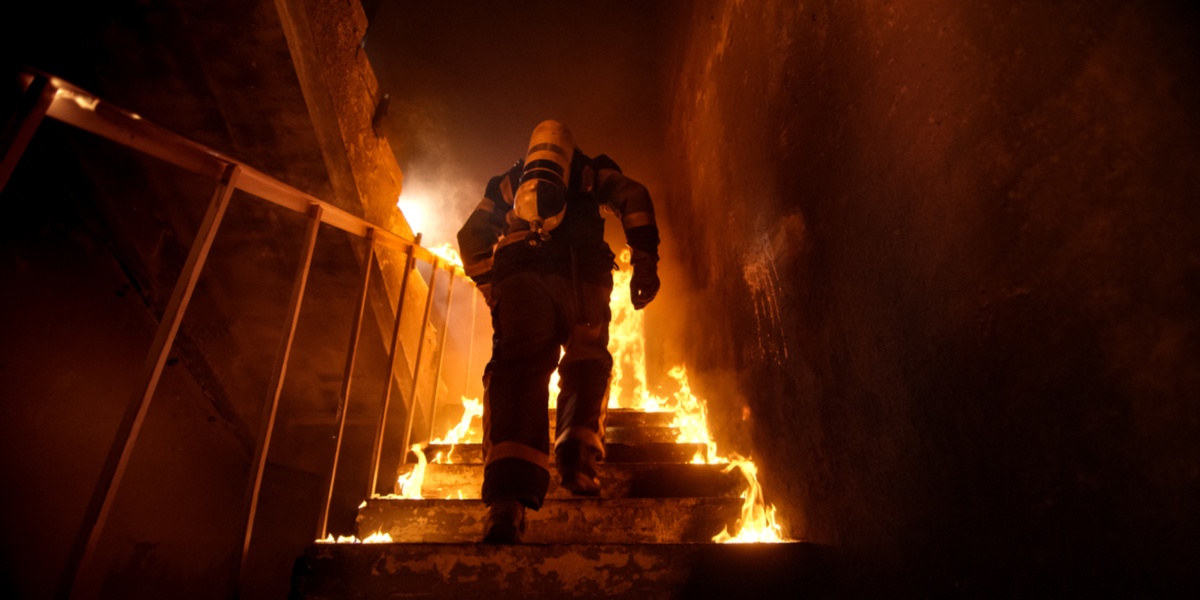Auxiliary Radio Communication System (ARCS): Importance for the NY Fire Department

When a building suffers a fire or other emergency situations, firefighters can coordinate their efforts better if a reliable communication system is available. However, this can be a challenge if communication depends on wired infrastructure; a fire can take out telephony and Internet connectivity if it damages a telephone rack or data center. An Auxiliary Radio Communication System (ARCS) is required by the NYC Department of Buildings precisely to address this issue, providing a communication method that can be counted upon during emergencies.
When firefighters cannot communicate with the fire command center and their peers in other building areas, the outcome can be tragic. For example, if a firefighter identifies a hazard such as backdraft, everyone else can be notified with the ARCS. Lack of communication makes the firefighter team much more vulnerable.
An ARCS provides communication for firefighters even when separated by thick floors or concrete walls in a tall building. The system can also operate without having to constantly switch radio channels, eliminating a distraction and allowing firefighters to focus completely on the emergency. 9/11 was a tragic example of how deficient communication affects firefighters, and many casualties could have been prevented with an ARCS.
Fire protection requirements in NYC are among the most demanding in the world, but this makes sense considering the large number of people in high-rise buildings. Working with qualified design engineers simplifies code compliance and project approval.
What is an Auxiliary Radio Communication System?
An ARCS has several distinctive features: it is wireless and bidirectional, while using frequencies that are exclusive for the FDNY to prevent interference. Its basic components are dedicated radio consoles (DRC), radio amplification units (RAU), radiating cables, antennae and power supplies.
The layout of an ARCS includes a base station or transceiver, connected to an antenna system that covers the whole building, plus a radio console on the lobby for ease of access. Like with any major building system, approval from the NYC Dept. of Buildings is required before installation. In the specific case of an ARCS, approval from the NYC Fire Commissioner is also required, given the important role of the system in firefighting.
Approval Procedure for ARCS Installation
For project approval, an NYC Registered Design Professional must submit a full set of construction documents. Article 917 of the NYC Building Code provides a list of the required documentation:
- Radio equipment type, including antenna specifications.
- Riser diagram and floor plans clearly indicating the location of all ARCS components.
- Legend: Symbology and abbreviations.
- Power source locations - primary and secondary.
- Technical specifications and listing information for all proposed equipment and cables.
Ideally, an ARCS system should be capable of providing full building coverage while optimizing equipment location and overall system cost. Fire protection systems include expensive components such as fire pumps and sprinkler piping, so any savings that don’t compromise performance are welcome.
Make sure your fire protection systems are properly designed.
Where Should ARCS Be Installed in New York City?
Installing an ARCS is mandatory in new commercial constructions taller than 75 feet and new residential constructions taller than 125 feet. Installation requirements and procedures are provided in rule 3 RCNY §511-01, along with the requirements for acceptance testing, inspection, certification and recertification. For radio communication systems similar to ARCS and installed before December 31, 2014, the rule provides operation and maintenance requirements as well, even when many of them are not ARCS strictly speaking.
Although NYC codes and standards are demanding in general, they are especially stringent in the case of fire protection. Not meeting codes when installing ARCS, automatic sprinklers, fire alarms, smoke control systems or other fire protection measures can lead to legal action, such as being denied the certificate of occupancy. Also consider that firefighters depend strongly on ARCS when addressing a fire or any other emergency in a high-rise building, so a well-functioning system can help save lives.
If you are planning to improve fire protection features in your building, keep in mind that fire sprinkler installation is mandatory for all properties covered by Local Law 26 of 2004. The deadline is July 1, 2019 and an interim report must be filed by July 1, 2018.

Ankit Javeri
Ankit is the Project Manager at NY Engineers, who holds an M.Tech. Some of his projects includes Community Access, Jackson Avenue
Join 15,000+ Fellow Architects and Contractors
Get expert engineering tips straight to your inbox. Subscribe to the NY Engineers Blog below.



